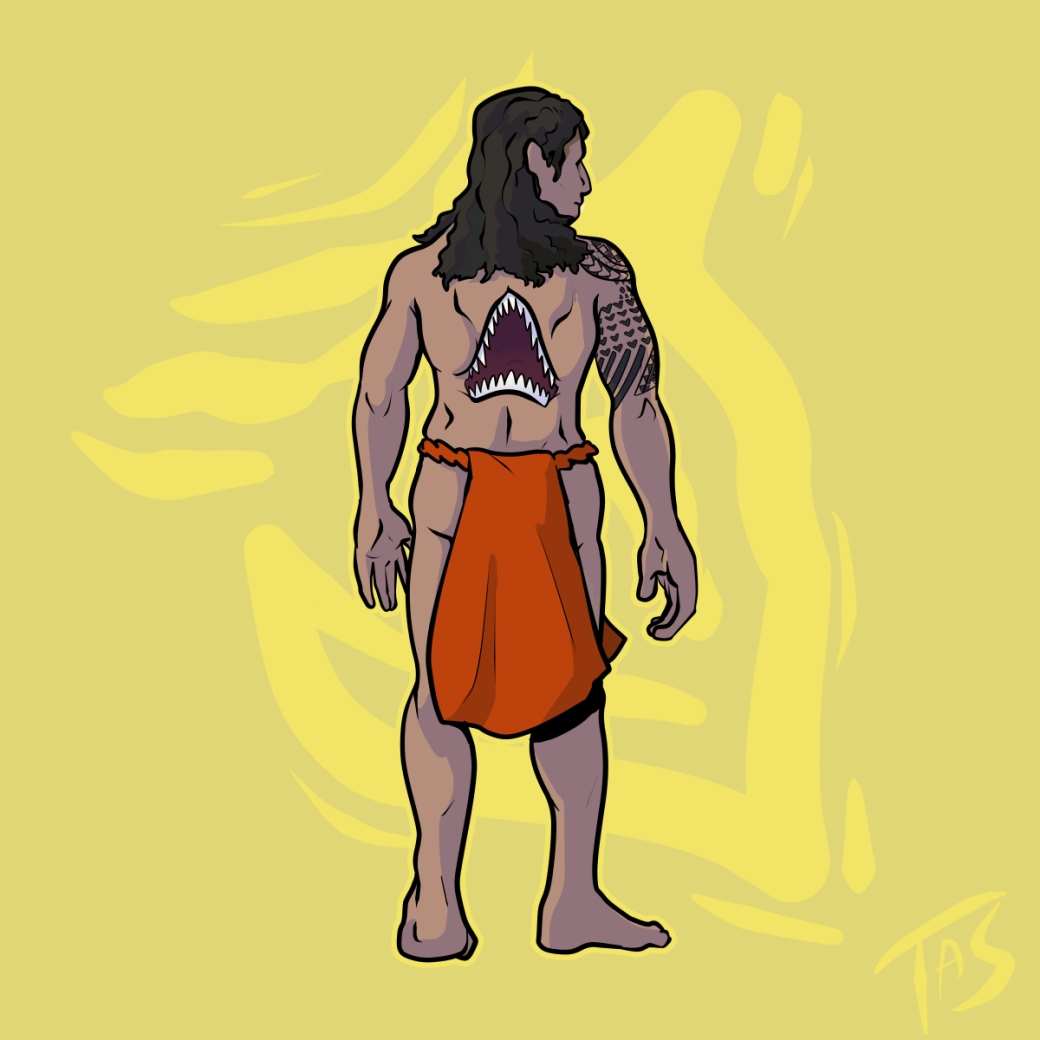
Nanaue
Region of origin: Waipio Valley, Hawai’i
Kamohoali, a god and the king of all sharks, was swimming close to the Waipio Valley on the big island of Hawaii, was struck by the a woman who had gone swimming late at night, Kalei. Posing as a human chief, he returned to land and sought her out, the two falling in love and eventually getting married. They lived together and in time Kalei became pregnant with a son. Kamohoali realized he could not stay on land forever and had to return to the sea. Heartbroken, he disappeared, in some versions informing Kalei of his divine nature and others he did not, but before leaving he had instructed Kalei that their son must never eat animal flesh. The son, Nanaue, was born with a large gaping hole in his back, resembling a fish’s mouth. Kalei did her best to hide this, and prevent Nanaue from eating meat as she was told, but when he came of age his grandfather, hoping his grandson would grow up into a great warrior, fed him a large, meat-heavy meal. After this, the mouth in Nanaue’s back grew shark-like fangs, he became filled with a voracious hunger and found he could take on the form of a shark when he entered the water. As he grew, the hunger increased, and he could not resist eating the other villagers as they swam in the water. He was eventually found out and chased out of the village. He fled to Maui and attempted to start a new life, marrying a local chiefess, but eventually his hunger got the better of him and was once again chased off after being unable to help himself from eating a young girl, this time arriving in Molokai where he led a more secretive life. He was able to control his more violent urges for a time, but he still went into the water and took on his shark form as discreetly as possible. One night a local caught him shape-shifting and, having heard the tales of a murderous shark-man from the other islands, got other villagers together and caught Nanaue, bringing him to shore and beating him to death.









